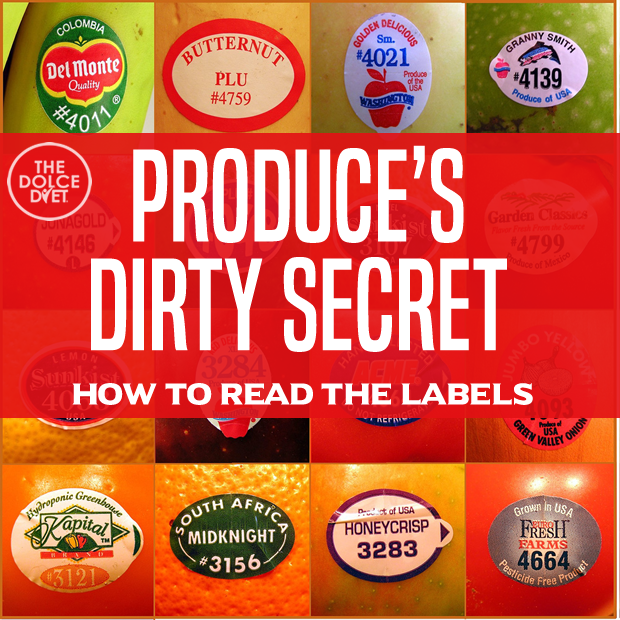DOLCE LIFESTYLE: Produce’s Dirty Secret
How to Read Produce Labels
by Samantha Coogan, MS, RDN, LD
Sometimes the supermarkets don’t explicitly state which of their produce is organic. Here is an easy way to figure it out based on the sticker label that is on produce, if the item isn’t already clearly marked.
Starts with a 4 = conventionally grown
Starts with an 8 = genetically modified
Starts with a 9 = organic
With this information in mind, be sure to stick to the rules of the Dirty Dozen and Clean 15 when picking up your produce. The Dirty Dozen (highest in pesticides) should always be purchased organic, while the Clean 15 (lowest in pesticides) can be purchased as conventionally grown. And always stay away from GMO whenever possible.
The Dirty Dozen
1. Apples
2. Celery
3. Sweet bell peppers
4. Peaches
5. Strawberries
6. Nectarines (imported)
7. Grapes
8. Spinach
9. Lettuce
10. Cucumbers
11. Blueberries (domestic)
12. Potatoes
*Kale and green beans were added to this list in 2012
The Clean 15
1. Onions
2. Sweet corn
3. Pineapples
4. Avocado
5. Cabbage
6. Sweet peas
7. Asparagus
8. Mangoes
9. Eggplant
10. Kiwi
11. Cantaloupe (domestic)
12. Sweet potatoes
13. Grapefruit
14. Watermelon
15. Mushrooms
QUICK TIP: A quick way to figure out how to buy organic vs. conventional is to figure out which parts of the fruit or vegetable you would actually consume. For example, most people eat an apple with the skin on it. The skin will have pesticide residue on it. However, you don’t eat the skin of an avocado, therefore, the inside is free of any pesticide residue as its skin has acted as a barrier.





